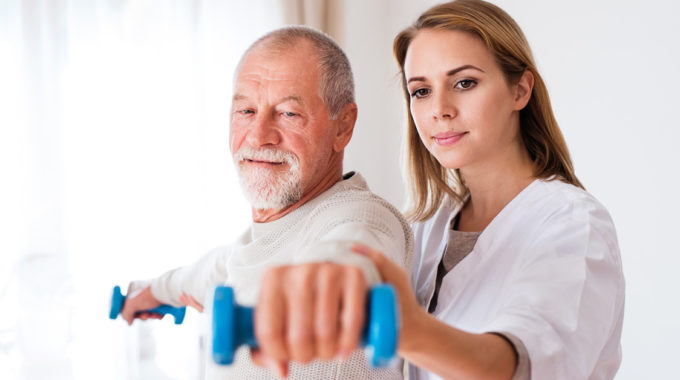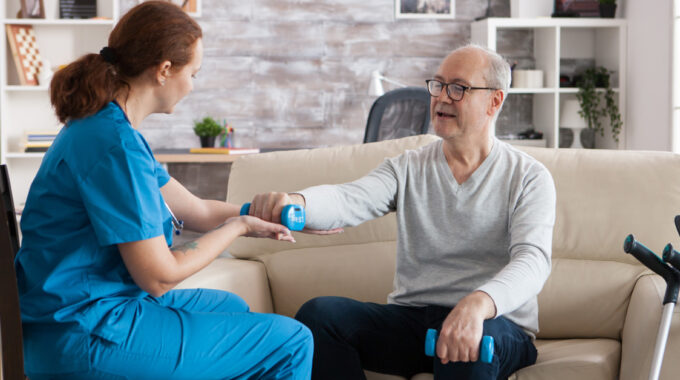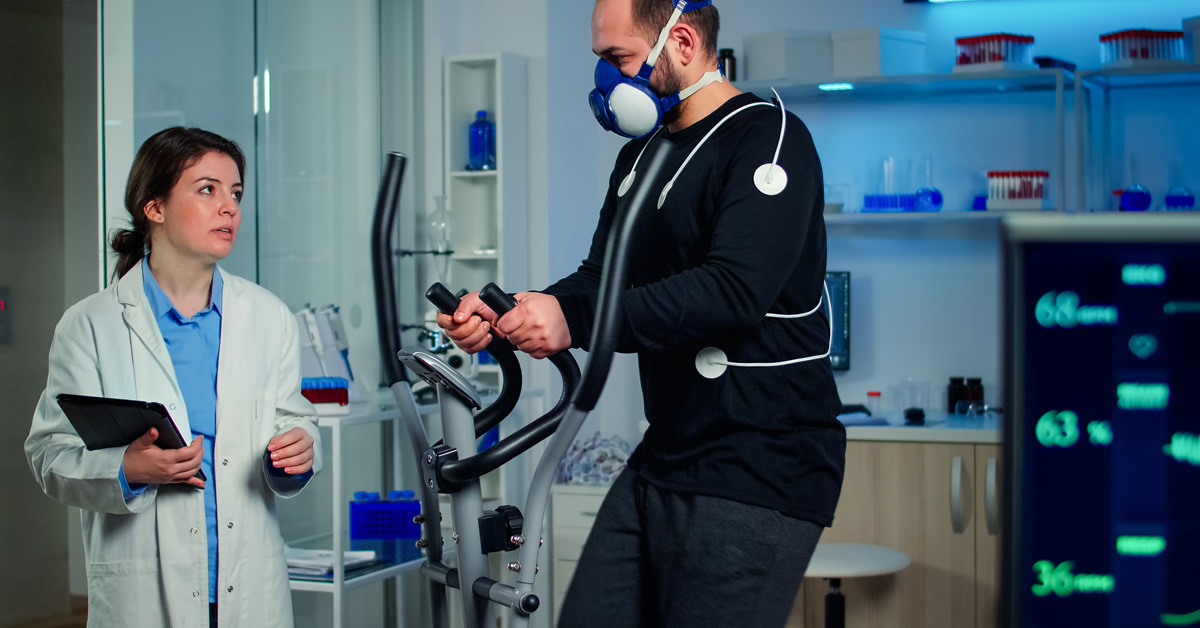
How to Reverse Age-Related Strength Loss
Did you know that most people lose roughly 30% of their muscle mass from middle age and up? Starting at the youthful age of 30, people typically lose 1% of their muscle mass per year.1 Healthcare professionals sometimes apply the terms sarcopenia, dynopenia, and/or geriatric disability. Regardless of the label, as this strength loss progresses, it contributes to fall injuries, nursing home admissions, and other undesirable outcomes. The good news is that age-related strength loss is manageable and in each person’s control.
What Causes Age-Related Strength Loss?
The two most cited culprits in this phenomenon are hormonal changes and anabolic resistance.2 Teens and twenty-year-olds produce more testosterone and growth factors compared to people age 30 and up. Add to this increasing anabolic resistance which lowers the body’s ability to break down protein and create the building blocks for muscles. The results of these changes are compounded by other age-related changes such as lower blood flow, inactivity, chronic diseases and infections, arthritis, insulin resistance and more. The big takeaway message is that our bodies start changing dramatically at age 30, so we must adapt how we build and maintain strength.
Yardwork May Not be Enough Exercise
Many of us have probably heard our dads declare that yardwork is all the exercise a person needs. While all exercise is better than no exercise, progressive resistance training will probably be necessary to resist age-related muscle loss.2 This means repetitive motion against more and more resistance – usually from weights or bands – in a structured program. Aerobic exercise has also been shown effective, but an aerobic heart rate must be maintained for 20+ minutes, at least three times per week.3 The older we get, the more challenging it will be to manage an effective program on our own. People can stack the deck in their favor by having a personal trainer or physical therapist help develop and monitor programs.
Change the Way You Eat Protein
We have more good news. The fact that we break down protein less efficiently can be overcome simply by eating more protein.4,5 Up to 41% of people over the age of 50 don’t even consume the recommended daily allowance (RDA) of protein.6 What’s more, most nutritionists think the RDA for protein is too low to prevent age-related strength loss.7 They recommend spreading protein consumption equally throughout the day. Try to consume protein within 30 minutes of strength training. If using a protein supplement, they suggest doing that between meals. Good sources of protein include lean chicken, salmon, unsweetened Greek yogurt, skim milk, and cooked beans.
What’s the Maximum Protein for Older Adults?
Protein intake as high as 1.6 grams per kilogram of bodyweight, per day have been found to increase the effectiveness of strength training.8 For a 190lb person, that would be 138 grams of protein daily – roughly double the RDA. Nutritionists recommend setting the maximum protein intake at 35% of energy. A gram of protein delivers 4 calories. For example, say you eat 100 calories of unsweetened Greek yogurt that has 20 grams of protein. Those 20 grams of protein deliver 80 calories. That means 80% of the energy is coming from protein. That’s helpful, because most foods at your fingertips will have less than 15% of their energy coming from protein. A different way of looking at the 35% max is to start with your daily calorie consumption. If a person consumes 2,000 calories per day, that means up to 700 of those calories could be from protein. Seven hundred divided by four equals 175, so that would suggest a max of 175 grams of protein daily on a 2,000 calorie diet.
What’s the Minimum Protein for Older Adults?
One study found that 1.0 gram of protein, per kilogram of body weight, per day, was the minimum protein consumption needed to maintain muscle mass with age.9 For a 175 lb elderly person, that would be 79 grams of protein per day. For these reasons, nutritionists recommend between 1.0 and 1.5 grams of protein per kilogram of bodyweight daily for maintaining muscle mass as we age.7
What Other Nutrition Helps Prevent Muscle Loss with Age?
Vitamin D deficiencies are common with age and associated with muscle loss. Getting adequate sunlight helps metabolize vitamin D. Good diet and supplementation can also help. Nutritionists are also recommending nutritional creatine supplements to enhance the muscle building effects of exercise.7
Power Matters More than Strength
Where strength refers to one’s ability to steadily lift a weight, power refers to a person’s ability to rapidly produce force. It turns out that power is more important for preventing disability and fall injuries than strength. The two are obviously related, but it is recommended that seniors incorporate bursts of force into their workouts. Where there is a risk of self-injury, there is even more impetus to get the guidance of a trainer or therapist when developing individual programs.
How Old Is Too Old for Strength Training
A person is literally never too old to build and maintain strength through exercise. Studies have found that even light resistance training achieved important improvements for people over age 90.10 After just 18 workout sessions, participants increased their average leg press by 23.4 pounds. They had fewer falls and faster walking speeds. The participants had the normal array of maladies: high blood pressure – 65%, arthritis – 60%, heart disease – 60%, dementia – 35%. However, for safety and effectiveness, this program was developed and monitored by healthcare professionals.
When Can People Use Home Health to Reverse Geriatric Disability?
People often use Medicare-certified home health to develop and monitor programs that reverse geriatric disability. Traditional Medicare pays 100% for agencies to send physical therapists and nurses to the homes of patients. Even long-standing geriatric disability can be reversed. To qualify, patients should meet Medicare’s definition of homebound. The definition is not as restrictive and the term “homebound” may imply. Also, to qualify for home health, a patient should have a recent medical occurrence such as a fall injury, a recently documented loss of ability, or a recent sarcopenia diagnosis.
References:
- Morley JE. Anorexia, sarcopenia, and aging. Nutrition. 2001 Jul 1;17(7-8):660-3.
- Morley JE, Abbatecola AM, Argiles JM, Baracos V, Bauer J, Bhasin S, Cederholm T, Coats AJ, Cummings SR, Evans WJ, Fearon K. Sarcopenia with limited mobility: an international consensus. Journal of the American Medical Directors Association. 2011 Jul 1;12(6):403-9.
- VanSwearingen JM, Perera S, Brach JS, Cham R, Rosano C, Studenski SA. A randomized trial of two forms of therapeutic activity to improve walking: effect on the energy cost of walking. Journals of Gerontology Series A: Biomedical Sciences and Medical Sciences. 2009 Jul 30;64(11):1190-8.
- Ferrando AA, Paddon-Jones D, Hays NP, Kortebein P, Ronsen O, Williams RH, McComb A, Symons TB, Wolfe RR, Evans W. EAA supplementation to increase nitrogen intake improves muscle function during bed rest in the elderly. Clinical Nutrition. 2010 Feb 1;29(1):18-23.
- Paddon-Jones D, Rasmussen BB. Dietary protein recommendations and the prevention of sarcopenia: Protein, amino acid metabolism and therapy. Current Opinion in Clinical Nutrition and Metabolic Care. 2009 Jan;12(1):86.
- Fulgoni III VL. Current protein intake in America: analysis of the National Health and Nutrition Examination Survey, 2003–2004. The American Journal of Clinical Nutrition. 2008 May 1;87(5):1554S-7S.
- Morley JE, Argiles JM, Evans WJ, Bhasin S, Cella D, Deutz NE, Doehner W, Fearon KC, Ferrucci L, Hellerstein MK, Kalantar-Zadeh K. Nutritional recommendations for the management of sarcopenia. Journal of the American Medical Directors Association. 2010 Jul 1;11(6):391-6.
- Campbell WW. Synergistic use of higher-protein diets or nutritional supplements with resistance training to counter sarcopenia. Nutrition Reviews. 2007 Sep 1;65(9):416-22.
- Arnal MA, Mosoni L, Boirie Y, Houlier ML, Morin L, Verdier E, Ritz P, Antoine JM, Prugnaud J, Beaufrère B, Mirand PP. Protein pulse feeding improves protein retention in elderly women. The American Journal of Clinical Nutrition. 1999 Jun 1;69(6):1202-8.
- Serra-Rexach J, Bustamante-Ara N, Villaran M, et al. Short-term, light-to-moderate intensity exercise training improves leg muscle strength in oldest old. J Am Geratr Soc. 2011; 59 (4): 594-602.






